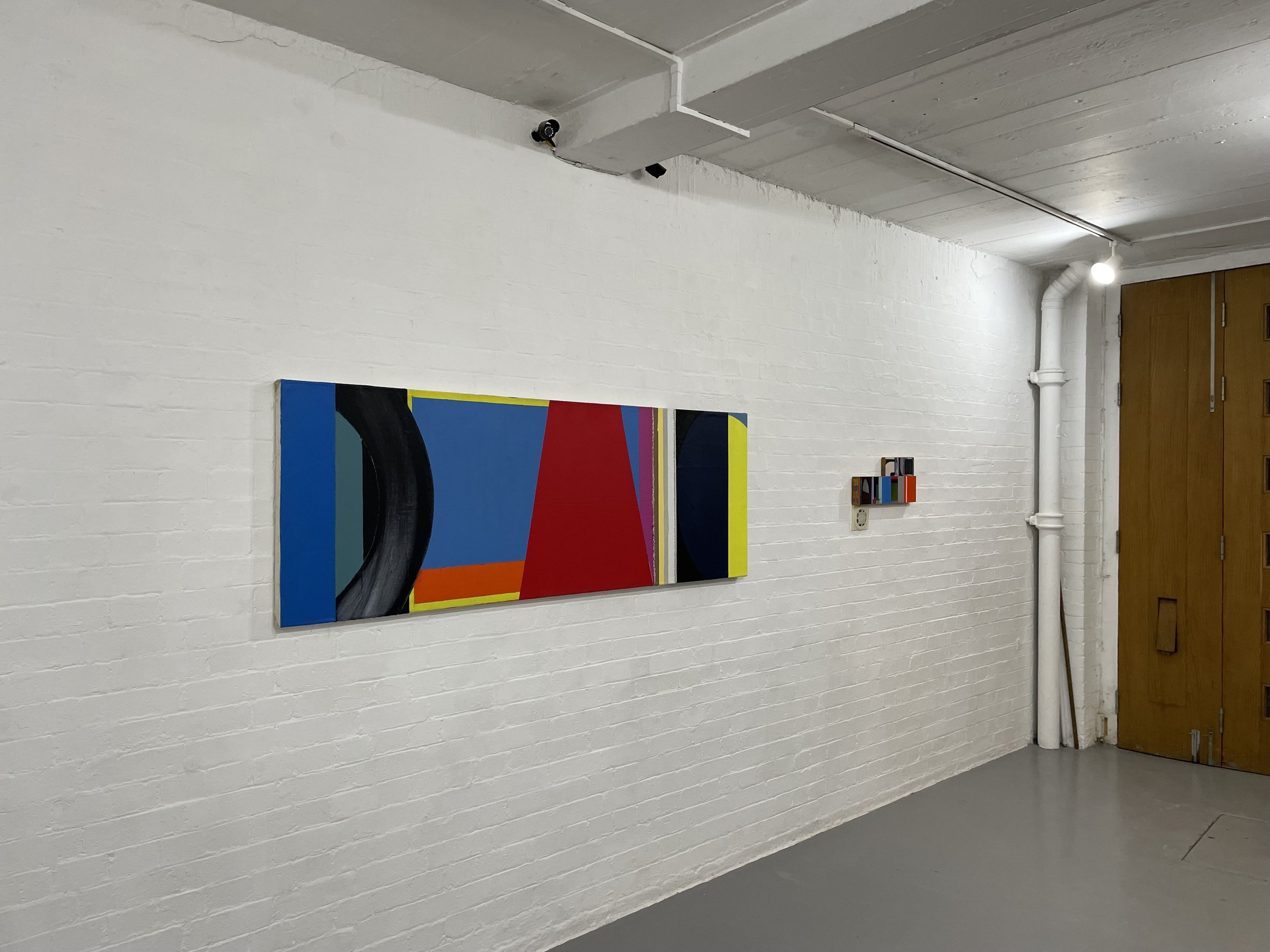Bits and Pieces of a Broken World: Laurence Noga
Bits and Pieces of a Broken World: Laurence Noga
Laurence Noga’s paintings and constructions stand between conventional two-dimensional surfaces of colour and line and jazzy amalgams of wall-mounted three-dimensional shapes. The artist has candidly spoken about being influenced – an overused but here appropriate term – by Schwitters and Paolozzi amongst others, something that is plainly “declared” in these works whilst being tightly held in check by the strength of Noga’s own sensibility and approach. There’s a sort of bravado in operation in Noga’s practice, a jamming together of painting and assemblage that in some ways just shouldn’t succeed, and yet does.
Left: Soft Red filtered Lemon, 2020. Right: Soft blue filtered orange, 2019.
Noga’s most recent show, at London’s Standpoint gallery in late 2022 and aptly titled Strange Windows, was like four or five mini-exhibitions in one. A “washing line” (as Noga has called it) of small, speedy, dense abstract collages represented points of departure for later, larger paintings on metal, canvas and board (also displayed), while staged, appropriately, in a section of the gallery still retaining the odd industrial fitting from the building’s former life, were two or three series of constructed forms. Flat against the wall but also projecting from it, and requiring the viewer to perambulate about to gain the full effect, several compact assemblages implied containment and recursivity as much as an alignment with the plane of the wall. The bolted-on found fragments of scrappy wood recalled the driftwood complications of Margaret Mellis, mixed with snippets of Schwitters’ occasional collaged boxes, and even Frank Stella’s “Playskool” series seemed part of the overall allusive tone. A Cubist-inflected “back-to-basics” also staked its place in the display. It was as if Noga had miniaturised and remixed disparate components of Modernist and Postmodernist art, but since detritus is, by definition, common and devoid of value, it’s open to any artist to deploy found material if pertinent to the work at hand. If earlier generations of artists reconstituted and aestheticised waste, the implication today – if not the actual physical procedure – of dismantling and rearranging what’s received through, or transmitted by earlier artistic practice is not so much “fair game” as a vital – if implicit – form of critique.
Left to right: Double green filtered blue (Mud), 2022. Auto Buffet, 2021. Deep grey filtered pink, 2021. Double orange filtered black, 2020.
Noga’s carnivalesque assemblages are bright, ludic, very jolly, but melancholic too. These artworks function as archives, but also suggest practical puzzles and, at a stretch, tabernacles holding secret compartments. Yet one soon realises that the instant riot of relays and “pop” fragments, isolated letters, crude corporate logos, patches of woodgrain, and geometric printed patterns in fact retain the connotations of a lost past life. One of the triggers for Noga’s current work is the large collection of tools, product packages, restaurant menus, photographs, washers and other half-useless “rainy day” objects collected and meticulously stored by his father over many years. As a World War Two Polish refugee who had forcibly lost everything he knew and possessed, this man was highly conscious of the value of holding onto anything that might be needed later on. Schwitters, too, was a refugee who keenly took to hoarding little bits and pieces of a broken world, and surely such vigilance is part of why his work is recognised as being so significant today.
Left: Deep red filtered violet (smoke gets in your eyes). Right: Deep red filtered violet (Wait for me), 2021.
There are at least two strands of experience brought together in Noga’s practice, that of painting, and that highlighted by Walter Benjamin under the sign of the ragpicker, a figure who sifts through that which others have discarded in search of something that may be used again. As Susan Buck-Morss observes on page 293 of The Dialectics of Seeing, her 1989 study of Benjamin’s Arcades Project, “The past haunts the present; but the latter denies it with good reason. For on the surface, nothing remains the same.”
Peter Suchin
Laurence Noga (b.1961, UK) studied at Wimbledon School of Art in 1984 and completed his post graduate studies at Byam Shaw, Central St Martins. He was shortlisted for the John Moores Painting Prize in 2018 and exhibits widely. Noga lectures for the University of the Arts London (UAL) at Camberwell College of Arts. He belongs to the APT community of artists in South London.









